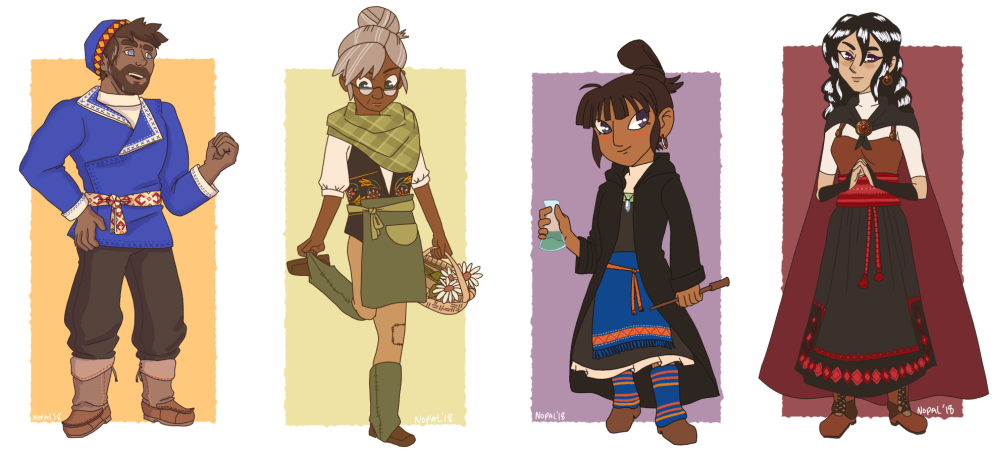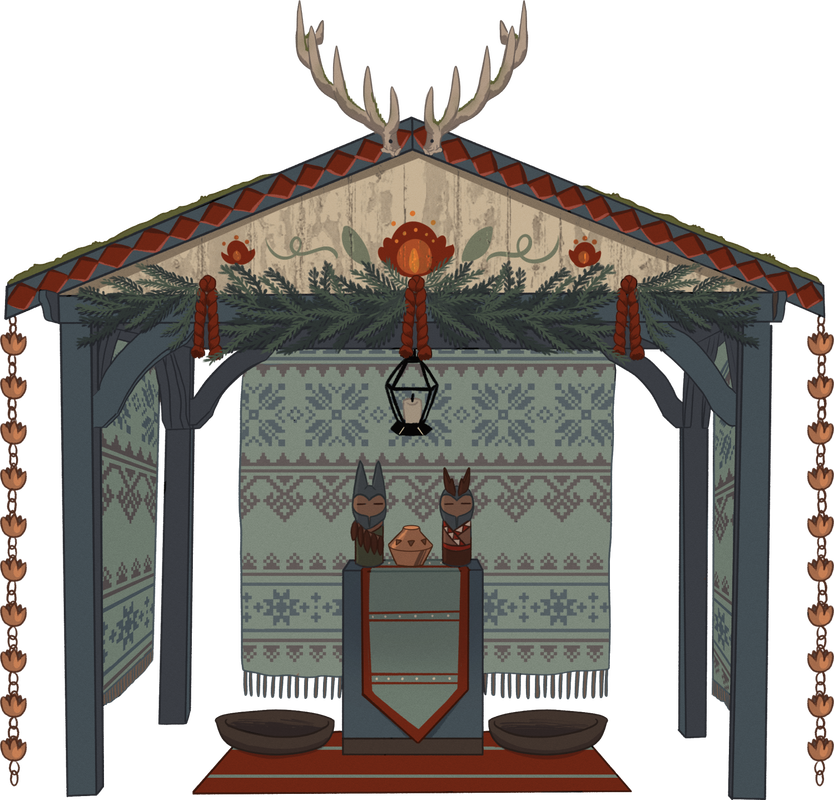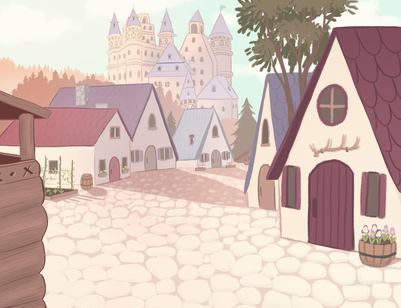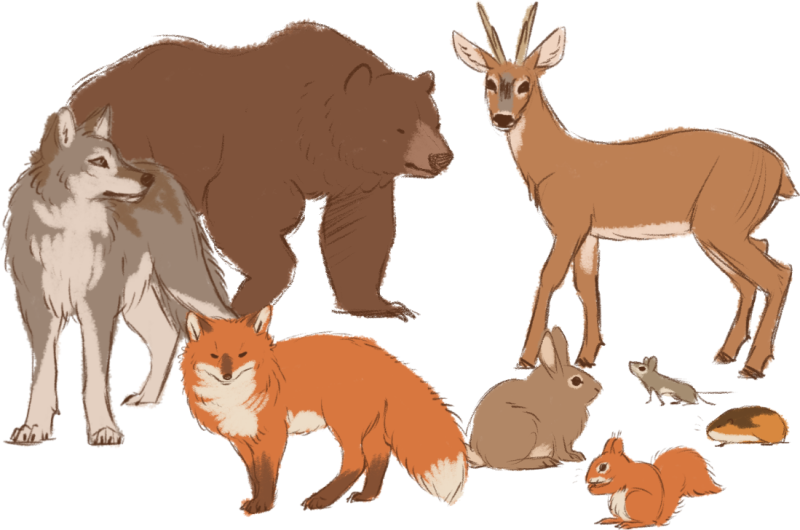There are many different species of plants and animals in Silkkassa. The environment generally resembles the northern hemisphere above the 45th parallel, with southernmost Silkkassa (such as Reheva) more resembling the pacific northwest US.
The beings we know best are human Silkkassans and the Elkh.
Table of Contents

Humans

The humans of Silkkassa live in permanent villages. Many of them subsist on hunting and fishing, but resources are shared communally. They have a generally mutually respectful relationship with bepotelkh and do not hunt them, but live with them. The majority of Silkkassans have brown skin, but there is some variation as travel overseas is fairly well established, so any skin color can be found on the continent. Silkkassans do not have strict gender roles or strict gender-specific clothing.
Spirituality

Their spirituality is animistic, with there being a few special deities related to nature itself, the harvest, etc. They hold festivals celebrating the seasons, at which there is typically food, dancing, and some ritual. There are shrines in the villages, with smaller villages having smaller, simpler shrines, and large villages having more elaborate shrines. Shrines are outdoors and consist of an area to make offerings and a clearing for festivities.
Shrines differ from town to town; Tuil's shrine may be covered in flowers; Onkia's shrine would have a fishing deity figure present, etc.
There is typically an incense censer and receptacles for offerings.
Politics

Silkkassa has one ruling family in Kei, but there are local governors in each village. Overall, the people are resilient and cooperative, with war being rather unheard of in the present time. However, there is a royal guard stationed in each village to defend against invasion from hostile foreign forces and pirates (at port villages). The size of the royal guard varies with the location and population density of each village.
Silkkassa is a constitutional monarchy with a socialist structure. The current leaders were chosen by the people. They are still subject to being removed if they arent doing their job properly. Being the child of the monarchy does not guarantee one will become "royalty" in the future (you have to earn it if you want it). At some point silkkassa was a traditional monarchy, but there was a revolution and huge push for change which brought them to constitutional monarchy. The children of the 'rulers' may still therefore be referred to as 'princess, prince' etc. just out of habit/tradition, but this does not imply they will be a 'ruler' in the future. The current leaders are quite beloved.
Relationships with Elkh

Silkkassans are generally very respectful of elkh, if not somewhat reverent. Elkh are often treated as cherished members of the family, as employees, etc. but the humans are still well aware that they themselves run the world. Influences of elkh on Silkkassan culture can be seen everywhere, from the way architecture has evolved, to everyday household items. Folk tales, songs, and history all reflect the human-elkh bond.

1. Carved wooden bep doll with felt saddle, mane made from real elkh hair, and stick antlers.
2. A stuffed doll in the likeness of a bep. It's filled with cotton stuffing and scented herbs.
3. Painted wooden bep nesting dolls.

Domestic Animals
Silkkassans primarily hunt and fish for meat, but do keep chickens and goats. Horses do not exist and bepotelkh fill many of the roles horses would take, keeping in mind that bepotelkh are not owned and are respected as sapient citizens. Dogs are occasionally kept both for work and for companionship. Cats do not exist but instead we have Felvits which are both in the wild and domestic. Cows also do not exist in Silkkassa, but goats may be kept for milking. There are a variety of companions one can find with Silkkassans and elkh (see encyclopedia).

Wildlife

Species found in Silkkassa are similar to what you would find in North America and northern Eurasia (These species may be known as holarctic). Bears, wolves, foxes, etc. There aren't many herptiles, but there are a few species of frogs, toads, aquatic turtles, and non-venomous snakes. There are a variety of birds, many of which migrate to warmer areas in the winter. A few notable species are ptarmigan, hawks, eagles, herons, and woodpeckers. Only bears and wolves are of any threat to bepotelkh, and many of these creatures have learned that the sound of the bells domestic beps wear means they will be reckoned with by humans if they touch the elkh. Clashes with wild beps are common, but most bepotelkh are equipped with antlers and muscular legs with sharp hooves to fight back. Bepotelkh have little interest in roe deer as the deer are not sapient and thus can't communicate quite the same. Bepotelkh typically feel embarrassed or offended when compared to wild deer.